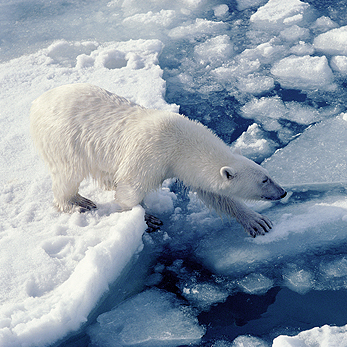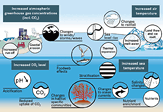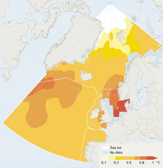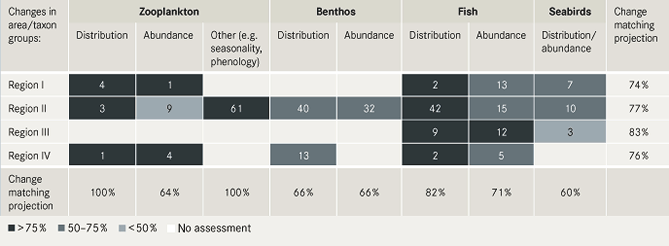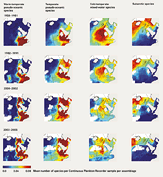The Arctic may be ice-free in summer within the next few decades. In September 2009, sea ice in the Arctic reached the third lowest minimum extent recorded since 1979. This follows the lowest minimum extent recorded in September 2007 with ice extent about half the mean minimum observed in the 1950s. The IPCC stated with high confidence in its Fourth Assessment report that continued changes in sea-ice extent are likely to have major impacts on marine organisms and human activities in the Arctic. On the one hand, the increase in open water may increase biological production south of the ice edge, with benefits to important North-East Atlantic fish species such as cod and herring. On the other hand, species such as ringed seals and polar bears that depend on sea ice for feeding and breeding are likely to be adversely affected. Early summer sea-ice melt could exacerbate these impacts by causing a mismatch between the timing of marine mammal breeding and the availability of prey.
Increased accessibility in ice-free periods is likely to allow more shipping and offshore oil and gas production in the Arctic waters. More commercial activity in the open ocean and along the Arctic coasts will inevitably increase the risk of pollution and the risk of introducing non-indigenous species through ships’ ballast water. Coastal erosion affects most the soft and historically eroded Arctic coastlines and is more likely as rising seas allow higher waves and storm surges to reach a shore no longer protected by ice. The risk of flooding in coastal wetlands is likely to increase, affecting coastal ecosystems and human settlements. Melting ice and snow may also release stored contaminants and increase their run-off to the sea in melt water.
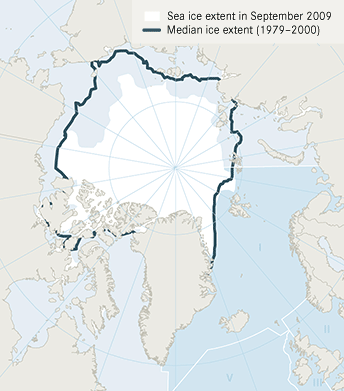
Data source: NSIDC

